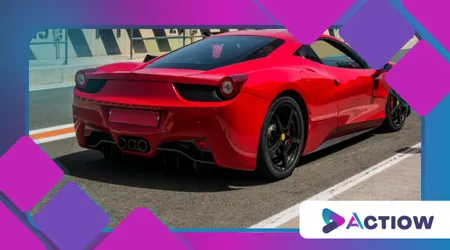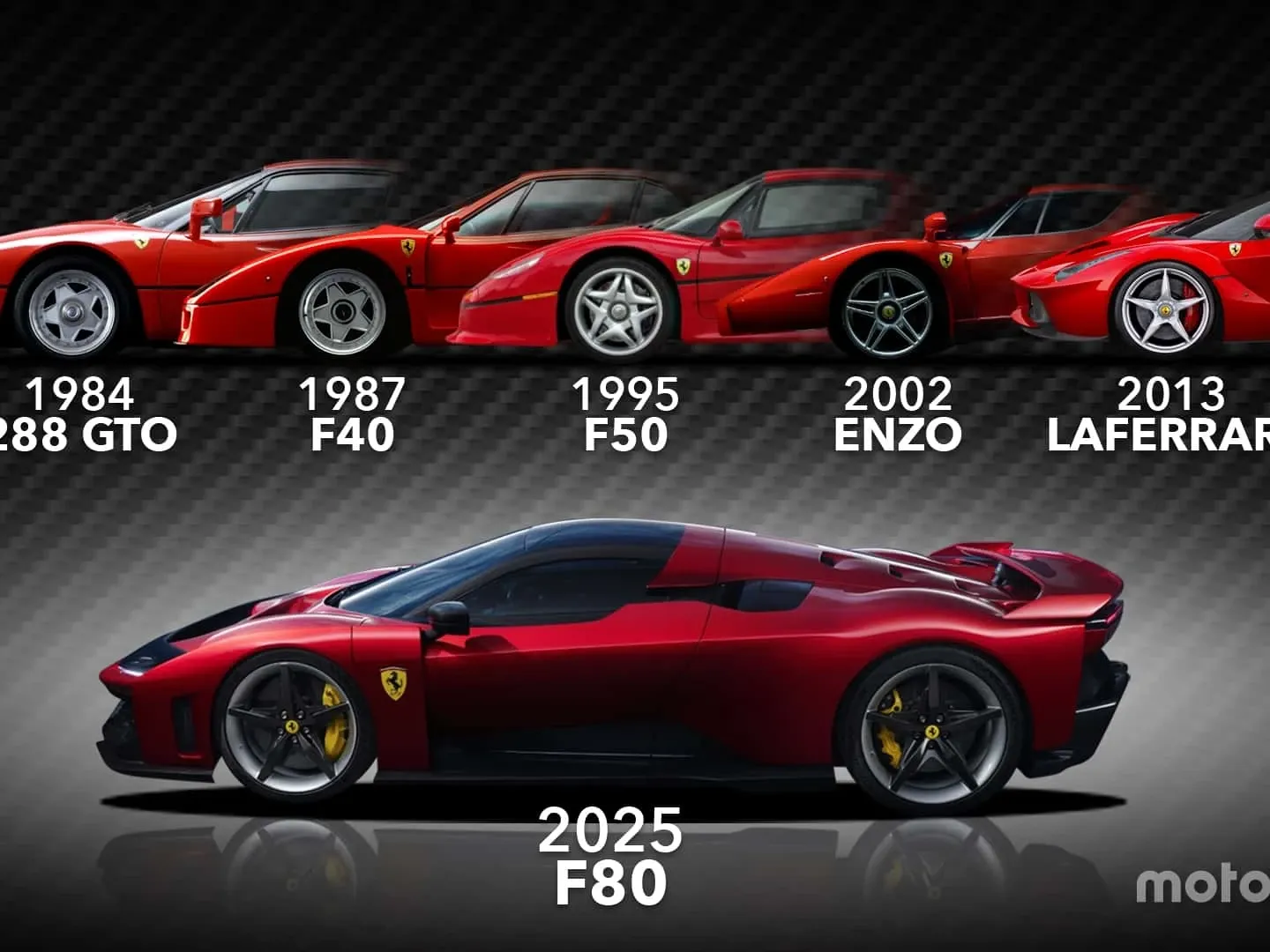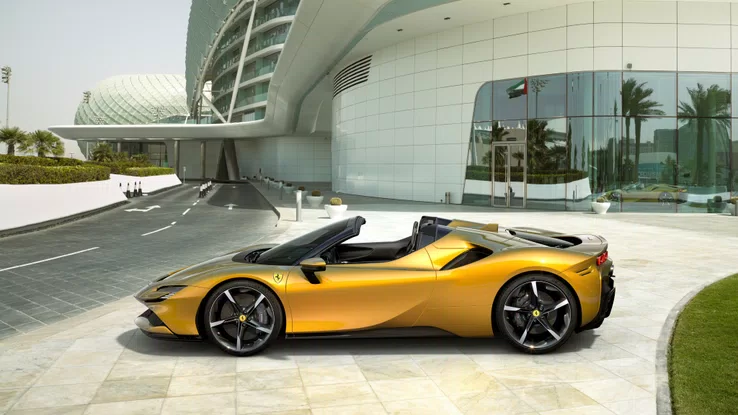The History of Ferrari: How the Brand Became an Automotive Icon

Anúncios
The history of Ferrari begins with a vision fueled by passion, ingenuity, and an unrelenting drive for excellence—an origin story that transformed a small Italian workshop into a global symbol of automotive prestige.
Founded by Enzo Ferrari in 1939, the company didn’t roll out its first car until 1947, yet its roots stretch back further, intertwining with racing, rebellion, and raw ambition.
What makes Ferrari more than just a car manufacturer? It’s the alchemy of engineering brilliance, a racing heritage that defines its DNA, and a mystique that captivates enthusiasts worldwide.
Anúncios
Let’s dive into how this iconic brand carved its name into the annals of automotive legend.
Ferrari’s journey is not merely about cars; it embodies the spirit of innovation and relentless pursuit of perfection.
The brand has become synonymous with speed, luxury, and performance, attracting a loyal following that transcends generations.
From Modest Beginnings to Racing Glory
Enzo Ferrari wasn’t born into wealth or handed success on a silver platter.
Hailing from Modena, Italy, he started as a racer himself, cutting his teeth with Alfa Romeo in the 1920s.
Frustrated by corporate constraints, he struck out on his own, founding Scuderia Ferrari in 1929—not as a carmaker, but as a racing team.
This wasn’t about building road cars yet; it was about speed, competition, and pushing limits.
The prancing horse logo, borrowed from a fallen World War I pilot’s plane, became a badge of honor, symbolizing courage and defiance.
Fast forward to 1947: the history of Ferrari as a manufacturer ignited with the 125 S.
Powered by a 1.5-liter V12 engine, this car wasn’t just a machine—it was a statement.
Enzo’s obsession with racing shaped every bolt and curve.
That same year, the 125 S clinched victory at the Rome Grand Prix, proving Ferrari could dominate tracks from the get-go.
Unlike mass-market brands, Ferrari didn’t chase volume; it chased perfection, laying the groundwork for a legacy built on exclusivity.
This focus on quality over quantity has allowed Ferrari to maintain its prestigious status in the automotive world.
The brand’s commitment to craftsmanship ensures that each vehicle is not just a mode of transport but a work of art, embodying the passion of its creators.
Engineering Marvels That Redefined Performance
Ferrari’s rise didn’t hinge on luck—it stemmed from relentless innovation.
The history of Ferrari brims with engineering feats that turned heads and set benchmarks.
Take the 250 GTO, launched in 1962: with its sleek lines and a 3.0-liter V12 pumping out 300 horsepower, it became the gold standard for grand tourers.
Only 36 were ever made, and today, one sold for $70 million at auction in 2018, per Sotheby’s—a testament to its enduring allure.
Contrast that with today’s marvels like the SF90 Stradale, Ferrari’s first plug-in hybrid, unveiled in 2019.
Boasting 986 horsepower from a twin-turbo V8 and three electric motors, it rockets from 0 to 60 mph in 2.5 seconds.
This blend of tradition and cutting-edge tech shows how Ferrari evolves without losing its soul.
Each model tells a story of precision, from hand-assembled engines to aerodynamic designs honed in wind tunnels alongside Formula 1 cars.
Here’s a snapshot of Ferrari’s evolution through two standout models:

| Model | Year | Engine | Horsepower | Top Speed |
|---|---|---|---|---|
| 125 S | 1947 | 1.5L V12 | 118 hp | 130 mph |
| SF90 Stradale | 2019 | 4.0L V8 + Electric | 986 hp | 211 mph |
The engineering prowess behind Ferrari is not just about numbers; it’s about the experience of driving.
Every Ferrari is designed to create an emotional connection between the driver and the machine, making each journey unforgettable.
+ 10 Tips to Keep Your Car Looking New for Longer
The Racing Heartbeat: Formula 1 and Beyond
Ferrari’s identity pulses strongest on the racetrack.
The history of Ferrari in motorsport isn’t just a chapter—it’s the spine of the book.
Joining Formula 1 in 1950, the team racked up 16 Constructors’ Championships and 15 Drivers’ titles by 2025, outpacing every rival.
Think of icons like Niki Lauda, who clinched titles in 1975 and 1977, or Michael Schumacher, whose five consecutive championships from 2000 to 2004 cemented Ferrari’s dominance.
Racing wasn’t a sideline; it was a proving ground.
Victories translated into road cars, with technologies like carbon-fiber brakes and paddle-shift gearboxes trickling down from the circuit.
Even setbacks—like the 2020 F1 season, where Ferrari slumped to sixth—sparked resilience, not retreat.
By 2023, Charles Leclerc’s wins signaled a roaring comeback, reinforcing the Scuderia’s tenacity.
Ferrari doesn’t just race; it lives to conquer.
The relentless pursuit of excellence in racing has driven Ferrari to continuously innovate, ensuring that its vehicles remain at the forefront of technology and performance.
This commitment to racing has also fostered a unique culture within the company, where every employee is inspired to push boundaries and achieve greatness.
Crafting an Iconic Brand Identity
Beyond horsepower and trophies, Ferrari mastered the art of mystique.
The history of Ferrari as a cultural icon owes much to Enzo’s knack for storytelling.
He limited production—only 14,000 cars rolled out in 2023—to keep demand sky-high.
Owning a Ferrari became a privilege, not a purchase.
Hollywood amplified this aura: from Magnum P.I.’s 308 GTS to The Wolf of Wall Street’s white Testarossa, Ferrari embedded itself in pop culture as a symbol of audacity and wealth.
Color plays a role too.
Rosso Corsa, that signature red, isn’t just paint—it’s a battle cry, tracing back to Italy’s racing heritage.
Yet Ferrari balances heritage with reinvention.
The 2021 Purosangue, its first SUV, stirred debate among purists but sold out pre-orders, proving the brand’s adaptability.
Ferrari doesn’t follow trends; it sets them, wielding scarcity and style like weapons.
This ability to evolve while maintaining its core identity has allowed Ferrari to attract new customers while keeping its loyal fan base engaged.
The brand’s marketing strategies further enhance its allure, creating an exclusive community that celebrates the Ferrari lifestyle.

Challenges and Triumphs in a Changing World
No legend escapes turbulence.
The history of Ferrari includes stumbles—financial strains in the 1960s nearly sank the company until Fiat stepped in with a lifeline in 1969.
Enzo resisted mass production, but Fiat’s backing (now under Stellantis) stabilized the ship without diluting the vision.
Today, electrification poses a new frontier.
Critics wondered if hybrids like the SF90 would betray Ferrari’s roar, yet the brand doubled down, promising an all-electric model by late 2025 that keeps the thrill alive.
Global competition looms large too.
Lamborghini and Porsche nip at Ferrari’s heels, but none match its mystique.
A 2022 J.D. Power study ranked Ferrari tops in luxury brand loyalty, with 78% of owners returning—a stat rivals envy.
Ferrari doesn’t just sell cars; it sells a legacy, blending heritage with forward momentum.
The company’s ability to adapt to market changes while staying true to its core values demonstrates its resilience in a competitive landscape.
As the automotive industry shifts towards sustainability, Ferrari’s commitment to innovation will be crucial in maintaining its iconic status.
Ferrari Today: A Legacy in Motion
Step into 2025, and the history of Ferrari shines brighter than ever.
The company’s valuation hit $82 billion in early 2025, per Bloomberg, dwarfing many mass-market automakers.
Its Maranello factory hums with artisans handcrafting each vehicle, a nod to Enzo’s ethos: “The factory is my cathedral.”
Meanwhile, the Pininfarina Battista, an electric hypercar tied to Ferrari’s lineage, clocks 1,900 horsepower, hinting at where the prancing horse might gallop next.
Sales reflect this vigor:
| Year | Units Sold | Revenue (Billions) | Key Model Launched |
|---|---|---|---|
| 2020 | 9,119 | $3.9 | SF90 Stradale |
| 2023 | 13,663 | $6.5 | Purosangue |
The dedication to craftsmanship and innovation ensures that Ferrari remains a leader in the luxury automotive market.
With each new model, Ferrari continues to push the boundaries of performance and design, captivating car enthusiasts around the globe.
Why Ferrari Endures
So, what cements Ferrari as an automotive icon?
It’s not just the stats—though 243 F1 wins by 2025 dazzle—or the price tags.
The history of Ferrari thrives on a paradox: a brand rooted in racing’s gritty past, yet always lunging toward tomorrow.
Enzo once said, “The client is not always right,” a bold stance that prioritized vision over pandering.
That audacity, paired with unmatched craftsmanship, keeps Ferrari in a league of its own.
Picture this: a kid in 1947 gazing at the 125 S, dreaming of speed.
Now, a teen in 2025 pines for the electric Ferrari’s silent thunder.
Across decades, borders, and innovations, Ferrari doesn’t just endure—it inspires.
From Modena’s dusty roads to the world’s grandest stages, the prancing horse gallops on, a testament to passion forged in steel and spirit.
Ferrari’s ability to connect with its audience through storytelling and shared experiences strengthens its bond with fans.
The brand’s legacy is not just about cars; it’s about a lifestyle that celebrates excellence, speed, and a relentless pursuit of dreams.
